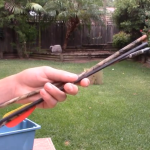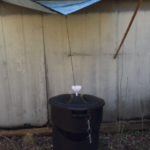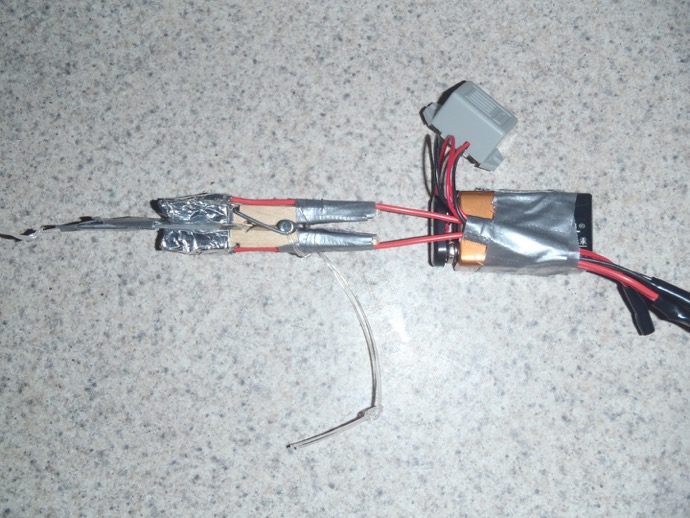
Trip wire alarms are an excellent first-line of defense against intrusions along a perimeter. The trick is to make one that will be loud enough for you and the intruder to hear. The following design is an excellent example of how you can use ordinary items to create a rudimentary warning system. You can improvise as needed, and it only takes a few minutes to put together.
Required Material
Duct tape
Electrical tape
Metallic tape
Fishing line
Siren or buzzer speaker
9V battery
9V battery clip
Clothespin
Wires
Wire cutter and strippers
Scissors
Preparing the Clothespin
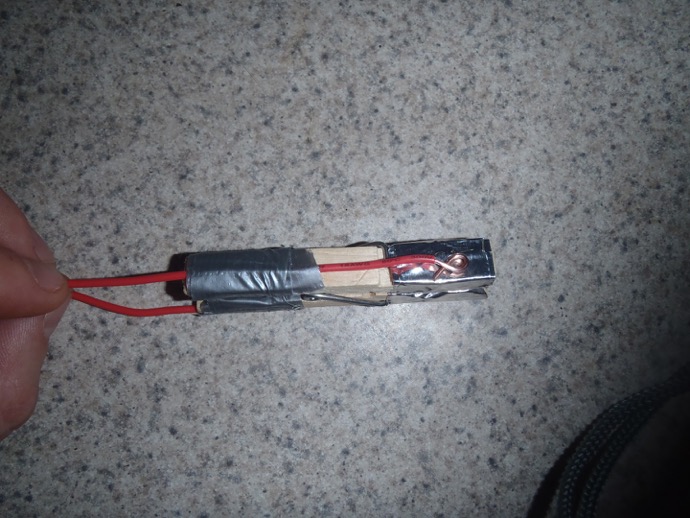
The first step is to take some pieces of the metallic tape and wrap it around each end of the clothespin. Start from just above the spring and continue to the ends. Make sure that you cover all sides of each of the teeth. The metal in the tape will cause a short-circuit which will trigger the alarm later.
The next step is to strip about 1 inch of insulation from the ends of two wires. Bend the metal so they make a loop on each end. You want to tape each wire to each handle section of the clothespin while bending the exposed ends so they rest atop the metallic tape. Make sure that the exposed wires are maintaining contact with the metal. Wrap a couple more strips of the metallic tape around the ends of the wire so they are secured to the clothespin.
Preparing the Speaker and Battery Clip
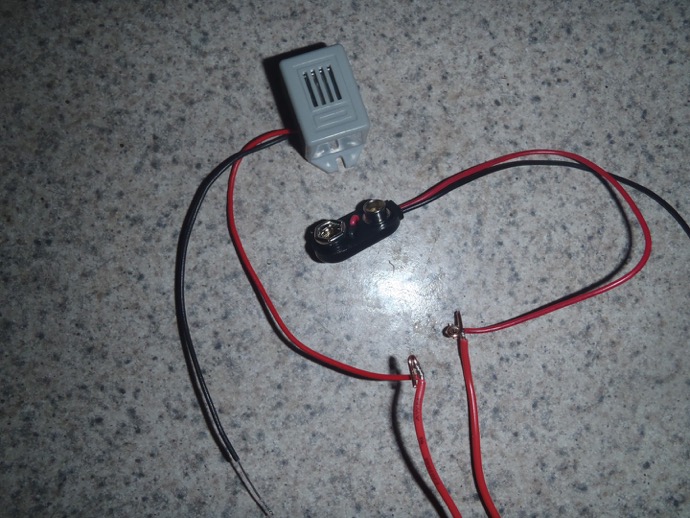
The next step is to strip the other end of the wires leading from the clothespin and loop them as well. Strip the positive wire coming from the speaker or siren and hook it into one of the loops. Strip the positive end from the battery connector and attach to the loop on the other wire. Then, connect the negative wire from the buzzer or siren to the negative one coming from the battery clip. Secure all of the connections with electrical tape.
Connecting Everything Together
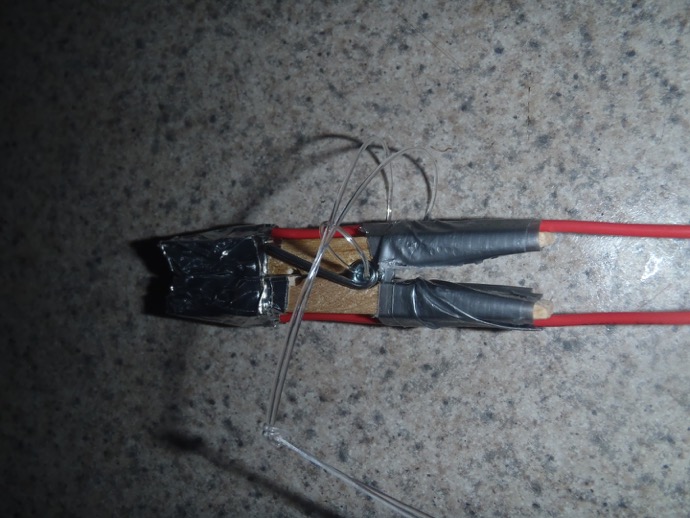
Take some fishing line and loop it around the metal spring in the center of the clothespin. This is to anchor the line so that it will properly trigger the alarm later, and the spring area makes for a good anchor point. Wrap the line around the whole clothespin and make sure there is a good leader extending outward.
The next step is to take a 1×3 inch piece of cardboard or scrap plastic and cut a notch from the top of one of the sides down about halfway into the material. Make the cut about ¼ inch in from one of the edges of the material. Loop another fishing wire through the notch and remaining material and secure with some duct tape. Have a leader extending outward from here as well.
Attach the desired length of fishing line between the two pieces, place it across the area that you are trying to protect and anchor to a stake, tree or other stationary object. Attach the battery and the alarm is ready to go. When someone trips the wire, it will knock out the plastic and trigger the alarm.

Trip wire alarms are an excellent first-line of defense against intrusions along a perimeter. The trick is to make one that will be loud enough for you and the intruder to hear. The following design is an excellent example of how you can use ordinary items to create a rudimentary warning system. You can improvise as needed, and it only takes a few minutes to put together.
Required Material
Duct tape
Electrical tape
Metallic tape
Fishing line
Siren or buzzer speaker
9V battery
9V battery clip
Clothespin
Wires
Wire cutter and strippers
Scissors
Preparing the Clothespin

The first step is to take some pieces of the metallic tape and wrap it around each end of the clothespin. Start from just above the spring and continue to the ends. Make sure that you cover all sides of each of the teeth. The metal in the tape will cause a short-circuit which will trigger the alarm later.
The next step is to strip about 1 inch of insulation from the ends of two wires. Bend the metal so they make a loop on each end. You want to tape each wire to each handle section of the clothespin while bending the exposed ends so they rest atop the metallic tape. Make sure that the exposed wires are maintaining contact with the metal. Wrap a couple more strips of the metallic tape around the ends of the wire so they are secured to the clothespin.
Preparing the Speaker and Battery Clip

The next step is to strip the other end of the wires leading from the clothespin and loop them as well. Strip the positive wire coming from the speaker or siren and hook it into one of the loops. Strip the positive end from the battery connector and attach to the loop on the other wire. Then, connect the negative wire from the buzzer or siren to the negative one coming from the battery clip. Secure all of the connections with electrical tape.
Connecting Everything Together

Take some fishing line and loop it around the metal spring in the center of the clothespin. This is to anchor the line so that it will properly trigger the alarm later, and the spring area makes for a good anchor point. Wrap the line around the whole clothespin and make sure there is a good leader extending outward.
The next step is to take a 1×3 inch piece of cardboard or scrap plastic and cut a notch from the top of one of the sides down about halfway into the material. Make the cut about ¼ inch in from one of the edges of the material. Loop another fishing wire through the notch and remaining material and secure with some duct tape. Have a leader extending outward from here as well.
Attach the desired length of fishing line between the two pieces, place it across the area that you are trying to protect and anchor to a stake, tree or other stationary object. Attach the battery and the alarm is ready to go. When someone trips the wire, it will knock out the plastic and trigger the alarm.



